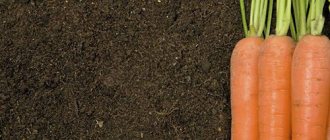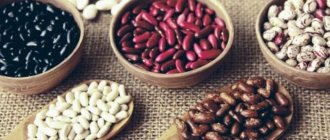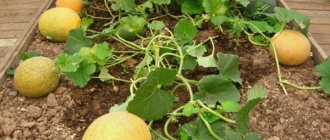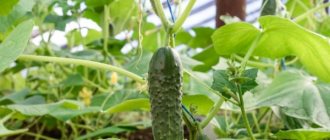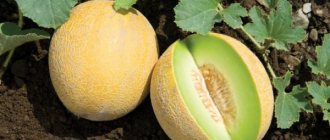Kiwano is an exotic fruit native to Africa. The plant belongs to the herbaceous vines of the Pumpkin family and a species of the Cucumber genus. Externally, the plant with flowers and fruits are really similar to this vegetable. The liana grows up to 3 meters in length, the leaves are large green, slightly dissected. Flowering of kiwano begins in the summer, the flowers are yellow and open in the morning until noon. The fruits are oval, similar to a melon or an overripe cucumber, only with soft thorns. Inside is a jelly-like green pulp with numerous pale green seeds. Kiwano tastes like a mixture of cucumber and banana. The peel is leathery and veiny, with soft spines, green in unripe fruits, gradually becoming yellow, reddish or orange in the process of ripening. The fruits grow up to 15 cm in length and weigh from 60 to 350 g.
Other names for kiwano: Milano, false anguria, Antillean or African cucumber, jelly or horned melon. Today, this plant is widely grown in Central America, Israel, the USA and New Zealand.
Kiwano grows successfully in countries with tropical climates and does not tolerate sub-zero temperatures at all. Russian breeders have developed the Green Dragon variety, which is well adapted to the Russian climate and quickly begins to bear fruit. Already 75 days after the sprouts appear, the first harvest can be harvested.
Benefits and harms
Kiwano contains a lot of vitamins A, C, group P and B, ascorbic acid, beta-carotene, contains carbohydrates, proteins and fats, iron, manganese, potassium, calcium, phosphorus, zinc, copper, salts and organic acids. One fruit contains 89% water, 100 g of kiwano contains 45 kcal.
Health benefits of kiwano:
- lowers blood pressure, which is necessary for hypertension. Regular consumption of fruit protects against myocardial infarction and rheumatism;
- reduces the amount of sugar in the blood, which is especially important for people with diabetes;
- thins the blood due to the large amount of water in the pulp;
- removes radionuclides, waste and toxins from the body;
- restores the balance of water and salt, saturating the body’s cells with essential substances, oxygen and moisture;
- prevents aging of the body and the formation of cancerous tumors;
- stimulates digestion, thanks to dietary fiber, which is part of the fruit and envelops the walls of the stomach and intestines, promoting their regeneration;
- useful for losing weight, saturates the body with important elements and promotes the breakdown of fats;
- strengthens the immune system and joints;
- increases hemoglobin in the blood, increasing the number of red blood cells;
- helps with insomnia, for this purpose the juice is mixed with honey and drunk at night.
The fruits have the following properties:
- soothing
- antiseptic
- anti-inflammatory
- cleansing
- immunomodulatory
- healing
In cosmetology, masks are made from the fruit that tighten and tone the skin of the face and body, scrubs and peelings are made.
There are no contraindications to consuming the fruit, except for an allergic reaction of the body. It should be remembered that for us this is an exotic fruit and for the body it is a new food that needs to be tried a little and monitor the reaction.
Mask for the face
Remove the pulp from 1 kiwano fruit and mix with honey. You can use yogurt or sour cream. Apply the prepared mixture to your face for a few minutes, then rinse with warm water.
Chemical composition
Most of the pulp consists of water. The benefits for the body are due to a large number of useful substances:
- beta-carotene (vitamin A);
- ascorbic acid (vitamin C);
- B vitamins;
- potassium;
- calcium;
- magnesium;
- phosphorus;
- iron;
- manganese;
- zinc;
- manganese;
- copper.
Also contains proteins, carbohydrates, organic acids, sugars, mineral salts, P-active substances, and a small amount of ash.
back to menu ↑
Application in medicine
The juice of the fruit is used as a sedative; drinking it is very useful for people suffering from insomnia. The fruit has a beneficial effect on intestinal motility, is used externally in the treatment of burns and open wounds, and helps stop bleeding. Kiwano has a therapeutic effect on anemia, tuberculosis, atherosclerosis, bronchitis and gout. During chemotherapy, fruit juice is very useful, which helps to some extent protect the body from a side effect of this procedure - hair loss.
Ornamental and fruit plant
Kiwano is a fruit that is grown not only for its tasty fruits. It is planted in garden plots and as an ornamental plant. And then you can tell your friends that you have a real guest from the tropics. Of course, it will most likely not be possible to harvest the crop in a short summer. But in a greenhouse - please. Enjoy the blooms and try your horned cucumber from Africa. Or you can put the collected fruits in beautiful boxes and give them as gifts to friends. An original and interesting present. But to do this you need to master the features of growing an amazing plant. This is what we will talk about now.
Use in cooking
Kiwano is eaten raw, and salads are prepared from it, which are seasoned with lemon juice, pepper and salt. Fruits are added to ice cream, sorbet, and curd desserts. Young fruits are pickled and preserved like cucumbers. Kiwano is suitable for preparing porridges, soups and side dishes.
The fruit goes well with yoghurts, creams, milkshakes, berries, vegetables, fish and meat dishes. Very tasty sauces, jams, compotes and desserts are made from kiwano. The fruits can be heat treated and pickled. The fruit juice is mixed with orange and lemon juice, whipped in a mixer and served in a glass made from the skin of the fruit. In the homeland of this fruit, the most popular dish is a seafood appetizer with cheese and kiwano.
The interesting appearance of the fruit is used to decorate dishes and holiday tables. When serving, the fruit can be cut into slices or circles, put the pulp in a glass made from the skin, garnished with berries.
Sherbet with Kiwano
Ingredients:
- 3 oranges;
- 2 tbsp. l. cherry liqueur;
- 150 g pineapple yogurt;
- 180 g condensed milk or cream;
- 3 Kiwano fruits.
Preparation:
- Squeeze the juice from the oranges and strain, add liqueur, yogurt and condensed milk.
- Place the mixture in a cool place overnight, covered with gauze folded in 3 layers.
- Add the kiwano pulp, stir and place in the freezer for a day.
- For the first 2-3 hours, beat the mixture with a mixer or whisk so that no lumps form in the sherbet.
- Place the finished dessert in glasses, garnish with cream, berries or fruit.
Kiwano sauce
Ingredients:
- 2 limes;
- 1 kiwano;
- 1 lemon;
- a clove of garlic;
- salt pepper;
- 1 tsp. mustard;
- 1.5 tbsp. l. olive oils
Preparation:
- Peel the limes, kiwano and lemon.
- Grind the fruits in a meat grinder and squeeze the mass through cheesecloth.
- Add salt and pepper to taste, crushed garlic, oil and mustard to the juice, mix well.
- Bring the mixture to a boil and place in the freezer for a while.
The sauce gives dishes an exotic taste and aroma; use it as a marinade or serve with meat and fish.
Taste qualities
Of course, this is what worries the consumer most. Will the expensive fruit be tasty and will your family like it? In our area, the horned cucumber is an exotic product that is bought more for entertainment than for food. But if you decide to grow it yourself, you will be pleasantly surprised. With proper care, the plant does not take up much space, and you will collect quite a lot of fruit.
Separately, it is necessary to say about the taste of horned melon. It is quite specific, it is very difficult to identify it with any familiar taste. The fruits are very juicy and have a sweet and sour taste. They are moderately refreshing and perfectly quench your thirst. Having tasted the delicious pulp for the first time, you can compare the fruit with a cucumber, melon or papaya. Some people find it similar to banana and lime. But here everyone has their own analogy, so in this case everything can be attributed to subjective opinion.
How to choose and eat Kiwano
When choosing exotic fruits, you must be very careful not to buy spoiled or unripe ones. When choosing a Kiwano, you need to remember the following recommendations:
- buy medium-sized fruits;
- ripe fruits of rich orange color with marble inclusions;
- there should be no dark brown spots or damage on the peel;
- the fruit should be elastic to the touch;
- The ripe fruit has yellow thorns.
If kiwano has not yet ripened and you purchased a green fruit, do not worry, it will ripen on its own in a few days.
If this is your first time trying these fruits, you may be wondering how to eat them? The peel of the kiwano is inedible; it is often used as a plate on which to spread the pulp. The pulp of the fruit is very tender and cannot be separated from the peel, like, for example, an orange. Usually the fruit is cut into two parts and the contents are eaten with a spoon. You can add sugar or salt to the pulp to taste.
Contains several powerful antioxidants
Horned kiwano melon is not only nutritious, but also contains several powerful antioxidants, many of which are nutrients themselves.
Antioxidants are compounds found in certain foods that can protect cells from damage caused by oxidative stress in your body.
Although oxidative reactions are a normal part of human metabolism, significant oxidative stress over time can lead to inflammation and impaired cellular function.
You can minimize this potential damage by eating enough antioxidant-rich foods such as horned kiwano melon.
The main antioxidants in kiwano melon are vitamin C, vitamin A, zinc and lutein. Together, these nutrients play a role in reducing inflammation and preventing chronic diseases such as diabetes, heart disease, and some types of cancer (, , , ).
In addition, the edible seeds contained in the fruit's pulp contain vitamin E, another nutrient with antioxidant properties ().
Conclusion:
Kiwano melon and its seeds contain several antioxidants, including zinc, lutein, and vitamins A, C, and E.
Growing at home
If you have a ripe kiwano fruit in your hands, you can save the seeds and plant them in late April or early May. The plant can take root well in an apartment and in the garden if it is planted correctly and the necessary conditions are created. It is necessary to remove seeds only from well-ripened fruit. Choose large and whole seeds.
Planting kiwano seeds consists of several stages:
- soak the seeds in a solution of sodium humate, you can use the “Epina-extra” fertilizer;
- when the seeds swell, put them in a warm place for 3 days until they hatch, this will increase the chance of germination;
- Plant the seeds 3.5 cm deep in loose, nutritious soil, which can be purchased at a flower shop. The container for planting should be no more than 10 cm in diameter;
- cover the pot with film; when the seeds sprout, it must be removed. Water the sprouts regularly.
How to grow Horned Melon from seed?
Since many people like this fruit, the question arises about its cultivation. In order for a plant to grow from seeds, you need to do the work in several stages:
- Seed preparation. To do this, they are soaked in a growth stimulator. The seed material swells and this contributes to earlier emergence of seedlings.
- Planting in containers. They are filled with nutrient substrate and seeds are sown. After sowing, water. Keep for some time in a warm place.
- Choosing a place for seedlings to grow. Although the sun is hot in Africa, direct rays can cause burns on leaf blades. Therefore, only diffused sunlight is shown to the seedlings.
- Planting in open ground. After the last frost, the plants are transplanted into the soil. When transplanting, maintain a distance between rows of 50 centimeters.
See also
Description of the Lada melon variety, features of cultivation and careRead
Particular attention is paid to the place where the crop will grow: it must be protected from both winds and the scorching sun. If you do not adhere to this recommendation, you may not get fruit, because burns will occur on the leaves and the ovaries will fall off.
Care and transplantation into open ground
During cultivation, it is necessary to follow some rules for caring for the plant:
- maintain the temperature at 25 degrees;
- provide the plant with long daylight hours using fluorescent lamps;
- protect the kiwano from direct rays of the sun to avoid burns;
- keep the soil moist and loosen regularly.
After 4 weeks, you can transplant the kiwano into open ground. To protect a young plant from the cold, you can create a greenhouse for it. The plant needs a lot of space because it grows and spreads quickly. It is preferable to plant it along fences or walls on a flat surface, in a windless, warm place. No more than 2 bushes should be planted per 1 m2. The hole for planting should be 40 x 35 cm in size. The root system of the kiwano is poorly developed and located superficially, does not withstand drought and stagnant water. A big advantage is the plant’s good resistance to pests and diseases.
Water the plant 2-3 times a week if the weather is not very hot. If it is very hot, you need to water every day. It is advisable to do this before sunrise or after sunset. There should be no weeds in the area where kiwano grows; weed the soil regularly. When the earth is covered with a crust, loosen it early in the morning or in the evening.
If the soil gets very hot or cold during the day, hill up. This will protect the roots from hypothermia and overheating and help retain moisture in the ground. For a good harvest, be sure to pinch, removing side shoots. The bushes are formed in the shape of a circle or allowed to stretch out in one continuous line.
Be sure to fertilize the soil, apply mineral and organic fertilizers so that the kiwano grows faster and gains the required amount of green mass. Organic infusions made from chicken manure, mullein or herbs are suitable. It is better to use complex fertilizers from mineral fertilizers. Feeding should be done every 10 days, alternating mineral and organic fertilizers so that the plant does not starve.
If the kiwano has a support, tie the main stem vertically so that the main mass grows upward, this will help save space around it. You can use cucumber mesh. When growing in a greenhouse, you cannot do without a garter, otherwise the plant will spread very much. Kiwano makes a very beautiful hedge, decorated with bright fruits.
Description of Kiwano
The homeland of the horned melon (Antillean cucumber, anguria, jelly melon) is tropical Africa. Botanists classify it as a member of the Pumpkin family (genus Cucumber). Despite the fact that it tastes like a banana with lemon, its closest relatives are cucumber, melon, anguria, cantaloupe and other tropical plants (at least 50 species).
Horned Melon, African Cucumber, African Kiwi, Jelly Melon, False Anguria
Thanks to its original cucumber-banana taste and unusual shape, the fruit has already won the sympathy of consumers in Central America, Israel and New Zealand. True, kiwano can be called a fruit conditionally: botanists have not yet decided on this matter. They consider all edible parts of any herbaceous plant to be vegetables.
Kiwano is a creeping vine up to 4-9 m long. The plant crawls along the ground and climbs trees. For normal growth and development, it requires reliable support and enough light.
If desired, you can create a living green hedge that reliably covers any corner of the garden from prying eyes.
Fragile and thin shoots are strewn with thorns and tendrils. Most often, kiwano fruits are eaten, although some African tribes also eat leaves. According to these criteria, horned melon can be classified as a vegetable.
Fruits include fruits with pulp and seeds. According to these parameters, in addition to kiwano, this category also includes tomatoes, cucumbers, and zucchini. Kiwano is often called the African cucumber, in England - the African tomato.
Ripe fruits are bright orange in color and are approximately the size of an orange.
This is an ordinary annual: quickly gaining green mass, flowering, setting fruit and withering at the end of the growing season. Its leaves resemble cucumbers: five-lobed, rough underneath, even prickly in aging plants - if you are hypersensitive, they can cause allergies.
The root system is weak, all located on the soil surface. Kiwano is classified as a dioecious species: both male and female flowers quietly develop on one vine. The Antillean cucumber blooms exclusively in the first half of the day.
New, artificially created varieties of fruits and vegetables are already bee-pollinated. But if you grow exotic plants on a balcony or in a greenhouse, you will have to pollinate them manually. This crop is propagated by seeds collected from overripe fruits.
Harvesting and storage
Kiwano is harvested in August, when the fruits turn yellow. Such fruits store well, but the taste leaves much to be desired. If you want to get a tasty harvest, start harvesting when the kiwanos are a bright orange hue. After harvesting, the plant produces more fruit. With a proper harvest, one kiwano growing in a greenhouse can produce up to 200 fruits per season. In order to have a good harvest, it is necessary to remove the grown green plants in time and immediately pinch the vine to limit the growth of shoots with male flowers.
The harvest can be stored for up to 6 months, and it does not need to be frozen or placed in the refrigerator. If you want to stock up on fruits for the winter, you can preserve them with salt or sugar. Such preparations will benefit the body in cold weather, saturate it with useful substances and decorate the table for the holidays.
Appearance
The horned cucumber is so nicknamed for its resemblance to its fellow. Let's look at the general signs to recognize it on the counter and not confuse it with other exotic fruits. In fact, many associations emerge. It looks like a small horned melon or a yellow cucumber with needles. They are sometimes compared to the closed jaws of a flytrap plant.
The unusually thick skin is a little surprising. It is difficult to bite through with your teeth, much like a watermelon or melon. Therefore, many people think that it is unprofitable to buy it, because most of the fruit will be thrown into the trash.
Crop care
When the first shoots appear, it is necessary to preserve them and provide normal conditions for further development. The plant is quite capricious, so you need to take into account all the nuances:
- Temperature. This is the most important indicator to focus on. During cultivation, the temperature should be maintained within 25 degrees with minimal fluctuations.
- It is very important to provide enough light. The southern plant needs lighting for at least 15 hours. Otherwise, its development will be slow and the seedlings will often begin to get sick.
- Seedlings need to be shaded from direct sunlight, otherwise they may suffer severe burns. Adult plants will survive such a disaster, but weak stems that have produced 1-2 pairs of leaves are threatened with death by any burn.
- Loosening is another key to success. You will achieve optimal growth, which will allow you to harvest on time. If the plants miss time, then with the arrival of cool August nights they will no longer be able to make up for it. That is, you will get a lot of tops and beautiful, but green and underdeveloped fruits.
Dish recipes
You can prepare unusual dishes from horned melon; due to the jelly consistency of this fruit, dishes from it turn out to be unusual.
Tender sherbet from Kiwano:
- In a deep container, mix the crushed pulp of one horned melon, freshly squeezed juice of one orange, 65 g of condensed milk, 1 tsp. coconut liqueur, 100g natural yoghurt. Place in the refrigerator for 3-4 hours.
- We take the mixture out of the refrigerator and beat thoroughly using a blender, then transfer it to a container and put it in the freezer.
- Form the resulting sherbet into balls using an ice cream scoop, sprinkle with grated chocolate or topping, and serve.
Unusual soup:
- From 5 kiwano fruits, extract the pulp, mash with a fork, pour water into the resulting juice, beat with a blender and filter.
- From 0.5 liters of water with the addition of pork ribs, chicken pieces and smoked bacon, cook the broth.
- Salt the resulting broth, add spices, garlic, kiwano juice and boil for about 5 minutes. Serve with freshly chopped herbs.
Advantages and disadvantages
The advantages of Antillean cucumbers include:
- decorativeness of the plant;
- excellent taste;
- rich vitamin composition;
- care does not differ from care for other melons;
- low susceptibility to diseases and pests.
The disadvantages include:
- thermophilicity;
- demanding on soil moisture;
- requires constant fertilizing;
- Rarely used as food by residents of the CIS countries.
Diseases and pests
The Antillean cucumber is rarely affected by common fungal diseases or pests.
Table of possible diseases:
| Types of diseases | Names of diseases | Causes of defeat | Solution |
| Fungal | powdery mildew | Most often develop when:
| Treatment involves:
|
| anthracnose | |||
| root rot | |||
| white rot | |||
| Pests | spider mite | Violation of humidity, both upward and downward | Insecticides used:
|
| melon aphid |
When treating with chemical products, take into account their decay periods. Harvesting is prohibited at this time.
Beneficial features
Anguria contains many useful substances:
- vitamins: P, C, B1, B2, B6, B9;
- trace elements: potassium, iron, sodium, manganese, zinc, copper.
This contributes to a beneficial effect on the body:
- relieves insomnia, has a sedative effect;
- eliminates gastrointestinal problems;
- useful for heart diseases;
- as a prevention of tuberculosis, gout, bronchitis;
- when losing weight, it cleanses of toxins, has a low calorie content (44 kcal per 100 g);
- cleanses the kidneys and liver;
- Helps cleanse and relieve inflammation of the skin.
The fruits of Antillean cucumbers do not accumulate nitrates and do not taste bitter.
There are also precautions:
- consumption of Antillean cucumbers can be hazardous to health in case of urolithiasis, they can cause severe pain;
- People prone to allergies should use them with caution;
- Not recommended for use by pregnant, nursing mothers and children under 18 years of age.
What the Antillean cucumber looks like, the features of its cultivation, use in folk medicine and what can be prepared from the fruit, see the video:
Characteristics
Table of the main characteristics of the Antillean cucumber:
| Liana length, m | Fruit length, cm | Fruit width, cm | Fruit weight, g | Productivity, fruits/plants | Growing season, days | Temperature for cultivation, °C |
| 4-6 | 8-10 | 4-6 | 30-50 | up to 200 | 60-70 | 20-27 |
The fruits have good shelf life, while retaining useful elements.
Use Anguria:
- fresh;
- salted;
- pickled.
Correct usage
Everyone has their own taste preferences, so it would be wrong to recommend an African cucumber to someone; it is better to buy and feel the exotic taste and form your own opinion about it. If you bought a ripe fruit with a bright orange color, wash it, cut it in half and eat it with a spoon. If the fruits are lighter or green, then it is cut into slices and sprinkled with spices.
You can eat kiwano raw and make jams, compotes, and preserves from it . Since the taste is not pronounced, you can add sugar, salt, and spices depending on your preferences. You can add kiwano when preparing first and second courses, in juices, desserts and snacks. Many people combine horned melon with tomatoes, radishes, and bell peppers.

